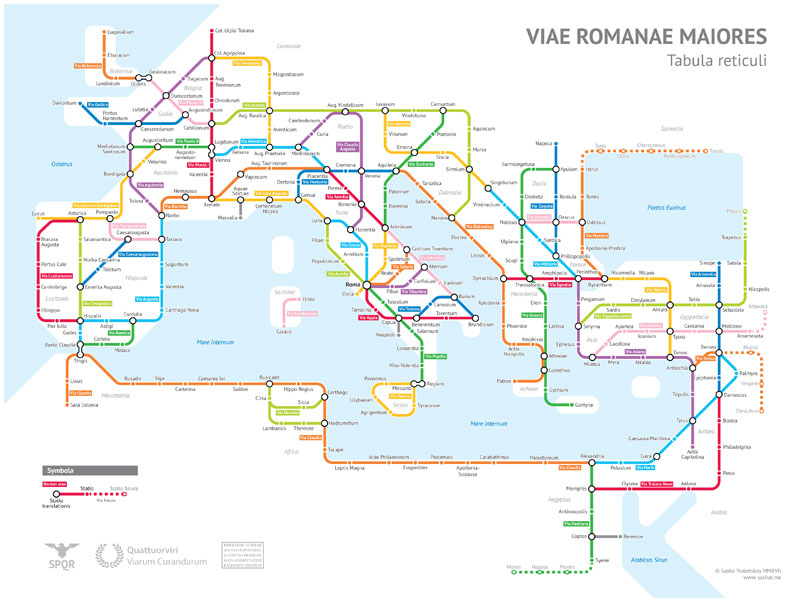Self-proclaimed geography and data nerd Sasha Trubetskoy recently created a subway-style map of the major Roman roads, based on the Empire of ca. 125 AD. On his website, Sasha adds:
Creating this required far more research than I had expected—there is not a single consistent source that was particularly good for this. Huge shoutout to: Stanford’s ORBIS model, the Pelagios Project, and the Antonine Itinerary. The lines are a combination of actual, named roads (like the Via Appia or Via Militaris) as well as roads that do not have a known historic name (in which case I creatively invented some names).
The biggest creative element was choosing which roads and cities to include, and which to exclude. There is no way I could include every Roman road, these are only the main ones. I tried to include cities with larger populations, or cities that were provincial capitals around the 2nd century. Obviously to travel from Petra to Gaza you would take a more or less direct road, rather than going to Damascus and “transferring” to the Via Maris. The way we travel on roads is very different from rail, which is a slight flaw in the concept of the map. But I think it’s still aesthetically pleasing and informative. [source]
You can see the full map above and click here (or the map) to see the full resolution version. Below you can find sections of the map as well. For more information visit sashat.me
[via Colossal]
Roman roads were built from 300 BC onwards. They provided efficient means for the overland movement of armies, officials, and civilians, and the inland carriage of official communications and trade goods. Roman roads were of several kinds, ranging from small local roads to broad, long-distance highways built to connect cities, major towns and military bases. These major roads were often stone-paved and metaled, cambered for drainage, and were flanked by footpaths, bridleways and drainage ditches. They were laid along accurately surveyed courses, and some were cut through hills, or conducted over rivers and ravines on bridgework. Sections could be supported over marshy ground on rafted or piled foundations.
At the peak of Rome’s development, no fewer than 29 great military highways radiated from the capital, and the late Empire’s 113 provinces were interconnected by 372 great roads. The whole comprised more than 400,000 kilometres (250,000 miles) of roads, of which over 80,500 kilometres (50,000 mi) were stone-paved. [source]
